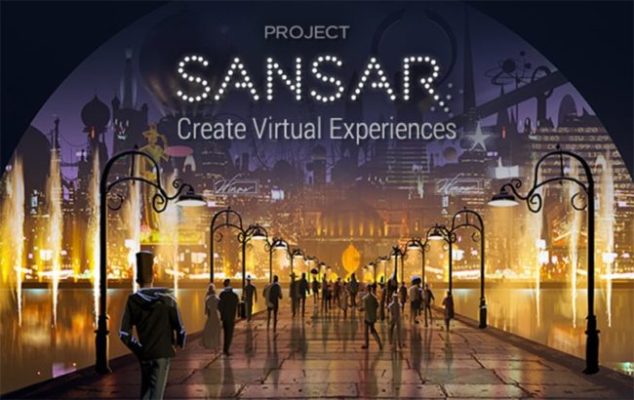Sansar

Today (Wednesday, January 4) at 8am PT, the Sansar Team will launch Sansar’s official YouTube Channel.
The Mediterraneo team is installing on Sansar a project to study the effects of virtual reality on the human brain.
The door is bright red, perched at the top of a mossy stone staircase in the middle of a floating island. When I approach, a mysterious tune begins emanating from it, as if playing from the other side. Right now, it’s just a simple prop, and there is no other side. But when I ask Linden Lab’s Bjorn Laurin, he tells me the door is supposed to lead to Narnia — and by next year, there’s no reason it shouldn’t.
The space we’re both inhabiting is part of Sansar (formerly known as Project Sansar), a new virtual reality experience from Linden Lab. In the mid-‘00s, Linden Lab struck gold with digital world Second Life, which played host to 1.1 million users at its peak. Second Life retains a user base of some 900,000 monthly active users, and CEO Ebbe Altberg brags that creators earned $60 million in real-world cash last year selling digital goods.
When virtual reality started gathering steam with the Oculus Rift, Linden Lab hacked in crude support for Second Life. The graphics were aging, though, and its complicated controls didn’t make much sense in VR. Instead of pursuing patches and upgrades, the company began work on a new virtual world. But according to Altberg, Sansar isn’t just supposed to be a headset-friendly Second Life clone — it’s a major overhaul of the basic structure. Second Life uses the metaphor of a single, finite universe, where Linden Lab makes money off expensive virtual “land.” In Sansar, environments can be endlessly duplicated to accommodate more people. To use Altberg’s metaphor, Linden Lab will slash Second Life’s high property taxes, taking a cut of virtual object sales instead.
“Second Life was very much built like a world,” says Altberg. “Pretty much everybody comes in through the front door of Second Life, and then they start trying to find things. Sansar, we’re sort of turning inside out and saying every experience should be an easily accessible entry point.” He uses the example of a language tutoring space that people could enter straight through Google search results. Sansar has been slowly inviting creators to build VR experiences since last year, and it will begin taking users in a larger beta early next year, with plans to officially launch soon after.






